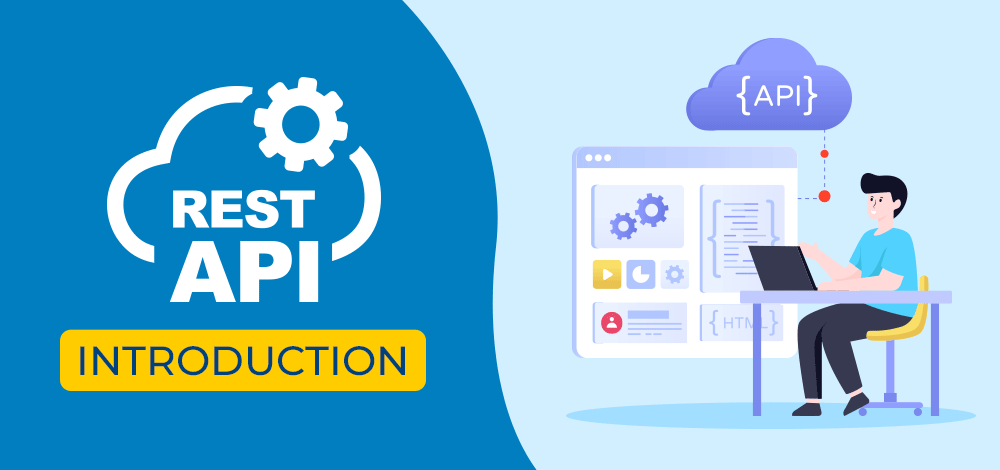What Are The Steps To Build REST API?
Introduction
An API (Application Programming Interface) serves as a bridge between different software applications, allowing them to communicate and share data. Among the various types of APIs, REST (Representational State Transfer) APIs have gained significant popularity due to their simplicity and effectiveness in web services. REST APIs utilize standard HTTP methods, enabling seamless interactions between clients and servers. They follow a resource-based architecture, where each resource is uniquely identified by a URI.
This overview highlights the key aspects of REST APIs, emphasizing their importance in modern software development and their role in creating scalable, flexible, and interoperable applications. Refer to the MERN Stack Developer Course to know more.
What Are REST APIs?

REST (Representational State Transfer) APIs are a set of conventions for building web services that enable communication between client and server applications. They utilize standard HTTP methods—GET, POST, PUT, DELETE—to perform operations on resources represented by URLs. Each resource can be uniquely identified through its URI (Uniform Resource Identifier), making it easier for clients to access and manipulate the data.
REST APIs are stateless, meaning each request from a client contains all the information needed for the server to fulfill that request, without relying on previous interactions. This allows for scalability and improved performance. Responses are typically formatted in JSON or XML, making them easy to read and integrate with various programming languages.
Key principles of REST include:
- Client-Server Architecture: The client and server are separate entities, allowing them to evolve independently.
- Statelessness: Each request is independent, enhancing reliability.
- Cacheability: Responses can be cached to improve performance.
- Layered System: Clients can communicate with intermediary servers for load balancing or security.
Overall, REST APIs are widely used in web development due to their simplicity, scalability, and ease of integration with various applications. One can check the MERN Stack Certification course to learn more about REST APIs.
Why Are They Important?
REST APIs are crucial for modern software development due to several key reasons:
- Interoperability: They allow different systems and platforms to communicate seamlessly, regardless of the technology stack, fostering integration across various applications.
- Scalability: The stateless nature of REST APIs enables them to handle large volumes of requests, making it easier to scale applications as user demand grows.
- Flexibility: Developers can work independently on the client and server sides, which accelerates the development process and facilitates updates without impacting the entire system.
- Simplicity: REST APIs use standard HTTP methods, making them easy to understand and implement. This simplicity encourages widespread adoption.
- Wide Adoption: Many web services and cloud platforms, such as AWS, Google Cloud, and social media platforms, utilize REST APIs, making them essential for developers to create and consume services efficiently.
Overall, REST APIs are fundamental in building modern, responsive, and interconnected applications. Aspiring professionals can join the MERN Stack Developer Course for the best skill development.
Steps To Build REST API
Building a REST API involves several key steps that guide you through the development process.
Here’s a structured approach:
1. Define the Requirements
Identify the purpose of the API, the data it will handle, and the expected functionality. Gather stakeholders’ input to ensure you capture all requirements.
2. Design the API
- Resource Identification: Determine the resources (data entities) your API will expose. For instance, in a bookstore API, resources might include books, authors, and customers.
- Endpoint Structure: Define endpoints for each resource, following a clear and consistent naming convention (e.g., /books, /authors).
- HTTP Methods: Decide which HTTP methods (GET, POST, PUT, DELETE) will be used for each endpoint based on the actions needed (e.g., GET for retrieving data, POST for creating new records).
3. Choose the Technology Stack
Select a programming language and framework that suit your needs. Popular choices include Node.js with Express, Python with Flask or Django, and Java with Spring Boot.
4. Set Up the Development Environment
Install the necessary tools, libraries, and frameworks. Set up a version control system (e.g., Git) to manage your codebase.
5. Implement the API
- Write the code for each endpoint, implementing the defined functionality. Ensure proper request handling and error management.
- Use a database (e.g., MySQL, MongoDB) to store and manage data, integrating it with your API.
6. Test the API
Conduct thorough testing using tools like Postman or automated testing frameworks. Ensure that each endpoint behaves as expected and handles errors gracefully.
7. Document the API
Create comprehensive documentation that describes endpoints, request/response formats, and usage examples. Tools like Swagger or Postman can help automate this process.
8. Deploy the API
Choose a hosting platform (e.g., AWS, Heroku) and deploy your API. Monitor performance and usage to ensure reliability.
9. Maintain and Update
Regularly maintain the API, fix bugs, and implement new features based on user feedback and changing requirements.
By following these steps, you can build a robust REST API that meets the needs of your application and its users. Refer to the MERN Stack Certification course for the best guidance.
Conclusion
In conclusion, building a REST API involves a systematic approach that encompasses requirement definition, design, implementation, testing, and deployment. By adhering to best practices throughout the process, developers can create APIs that are efficient, scalable, and easy to use. The significance of REST APIs in modern web development cannot be overstated, as they facilitate seamless communication between diverse systems and applications. With clear documentation and ongoing maintenance, a well-constructed REST API can serve as a vital component of software ecosystems, enabling enhanced functionality and a better user experience while supporting future growth and adaptation.














Post Comment